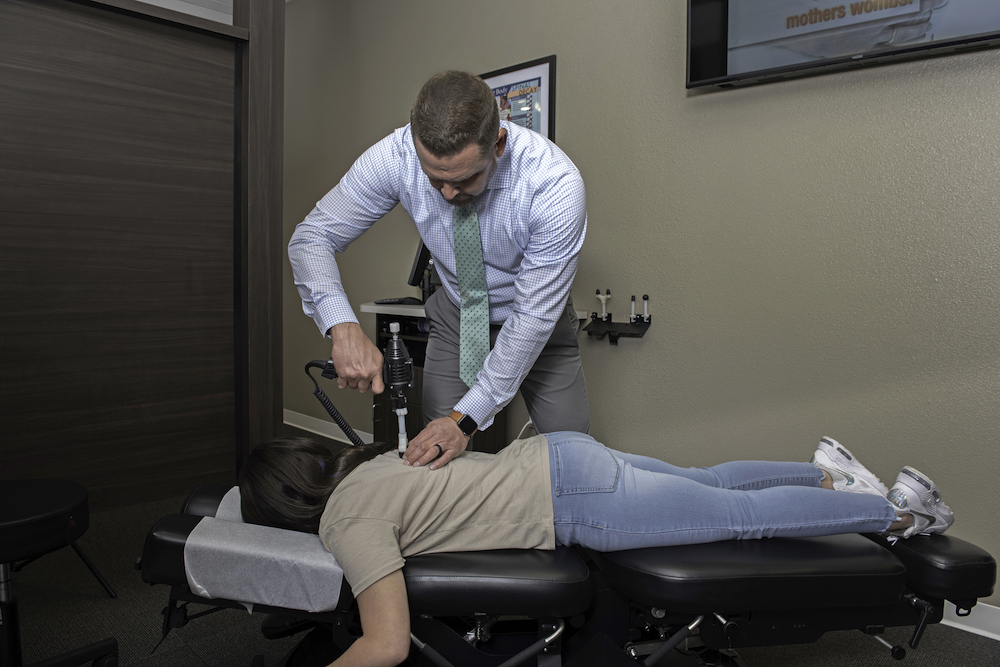Best Sleeping Positions and Tips for Back Pain
4 min read

Are you waking up in the morning with back pain? Or do you toss and turn all night because of pain in your lower back? This could be caused by the way you’re sleeping.
In fact, our sleeping positions can have a big impact on the health of our spines. Learn more about which positions are best for relieving or preventing back pain, plus what type of pillow and mattress may work best for you.
What is the Best Sleeping Position to Avoid Lower Back Pain?
The best way to sleep isn't the same for everyone. Let's look at several sleeping positions and the pros and cons of each.
- On your back. Sleeping on your back is the best position for most people to reduce lower back pain. However, some people can't fall asleep or stay asleep while lying on their backs. Others start to snore while lying on their backs (meaning they get a good night's sleep and their partner has to suffer). Placing a small pillow under your knees can help keep your spine in the neutral position and some people with a more arched back also find a small pillow beneath the lower back more comfortable for sleeping.
- Sleeping on your side is the position most people tend to choose naturally. But, it can put a strain on your lower back, especially if you don't have enough mattress support. If you are a side sleeper, place a firm pillow between your knees to help reduce lower back pain by keeping your spine in better alignment while sleeping.
- Sleeping in a fetal position can help some people who have disc problems by stretching the spine and reducing pressure on the nerves. However, if you are sharing a full or queen bed you may not have enough space to do this without causing problems for your partner.
- Sleeping in a reclined position, whether in an adjustable bed or in a reclining chair, is particularly helpful if you have isthmic spondylolisthesis (a condition in which a small stress fracture has led a vertebrae to slip out of place, causing pain by pressing on your nerves). This is part of why some older people sleep better in a reclinable chair. Adjustable beds can be expensive but may be worth it.
The sleeping position that tends to cause the most lower back pain is on your stomach. Turning your head to the side puts a lot of strain on your neck and can also cause shoulder pain. If you are unable to sleep in any other position, put a thin pillow beneath your stomach and hips to improve alignment.
It's hard to stay in a single position all night, so you may need to try a few to see what feels good in the morning.
Pillows and Lower Back Pain
Your preferred sleeping position affects what kind of pillow you should get:
- For back sleepers, get a thin pillow. A thin pillow keeps your chin from pushing into your chest, causing neck strain. An alternative is a memory foam pillow that will adjust to and support your neck, giving you better neck support.
- For side and fetal position sleepers, you want a pillow that supports your neck to keep your head and neck in line with your spine, and a second one for between your knees. Some people find a rolled up towel works for their knees. This keeps your legs in line, reducing lower back pain.
- For stomach sleepers, you want the thinnest pillow you can find. Thin pillows can be challenging to find - look for terms like "slim" and "low-profile" and be aware that you may have to order them online. Some stomach sleepers actually do best with no pillow at all. While sleeping on your stomach is a common cause of lower back pain, some people find they have no choice and need to take steps to reduce the amount of back pain they feel in the morning.
Pillows need to be replaced about every two years, according to the National Sleep Foundation.
How the Right Mattress Reduces Lower Back Pain
You may have been told that you need to sleep on a hard mattress if you have back pain. The truth is that a mattress that's so firm it feels as if you're sleeping on a board may not be your best bet. It also shouldn't feel like you're sinking into a cloud when you lay down on the mattress if you're concerned about reducing back pain caused by sleeping. For most people with back pain, a firm or medium-firm mattress is best. Avoid pillow-top mattresses (the pillow top tends to wear out faster than the mattress, but then you have to replace the entire thing or live with a firm mattress). Instead, if you need extra cushioning, get a separate mattress topper. These can also be removed for washing, improving hygiene. Some people find memory foam toppers very helpful.
You can firm up a too-soft mattress by sliding an inexpensive plywood board between the mattress and the box spring or platform. Some companies will also let you try a mattress for a while and return it if it doesn't help your sleep. Buying a more expensive mattress doesn't necessarily mean it will relieve back pain. Look at your options, including some of the more recent foam mattresses from brands like Nectar and Purple.
If you wake up often with lower back pain, it could be connected to how you sleep and what you're sleeping on. If you've already tried adjusting your position, pillow, and/or mattress, you may want to contact Village Chiropractic for an evaluation.





